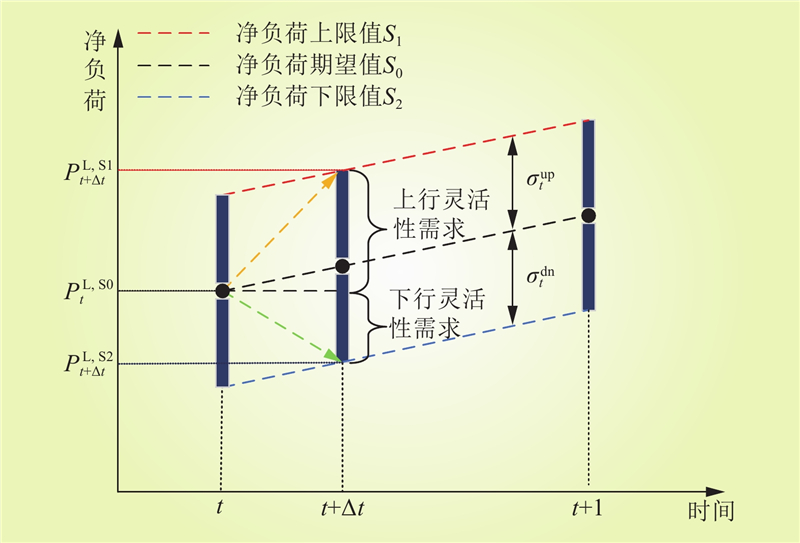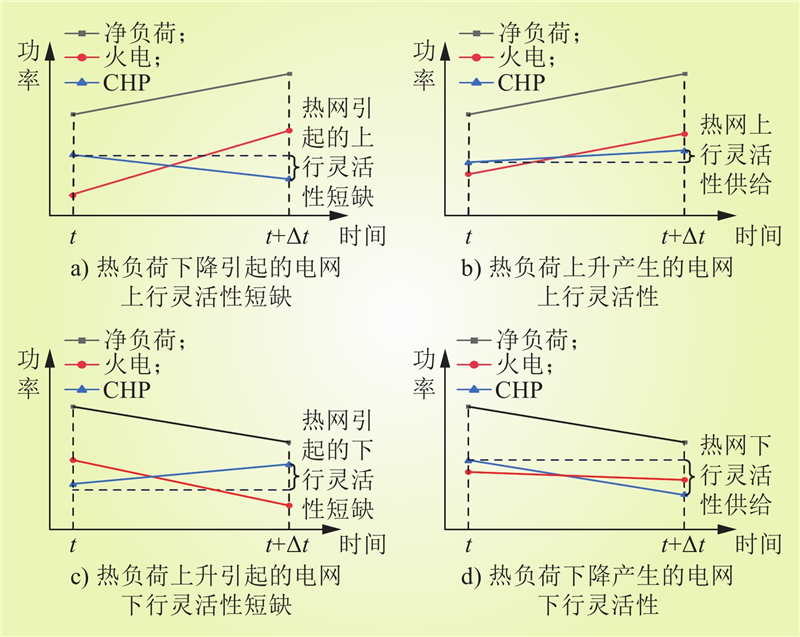| 1 |
ZHANG Y M, SUN P K, JI X Q, et al. Low-carbon economic dispatch of integrated energy systems considering extended carbon emission flow[J]. Journal of Modern Power Systems and Clean Energy, 2024, PP (99): 1- 12.
|
| 2 |
LI P, YANG M, WU Q W. Confidence interval based distributionally robust real-time economic dispatch approach considering wind power accommodation risk[J]. IEEE Transactions on Sustainable Energy, 2020, 12 (1): 58- 69.
|
| 3 |
李茜, 苟璐旸, 李樊, 等. 面向提供系统灵活性的风电场内机组优化运行[J]. 中国电力, 2022, 55 (8): 23- 30.
|
|
LI Qian, GOU Luyang, LI Fan, et al. System flexibility-oriented optimized unit operation in wind farms[J]. Electric Power, 2022, 55 (8): 23- 30.
|
| 4 |
WANG K, WANG C F, YAO W L, et al. Embedding P2P transaction into demand response exchange: a cooperative demand response management framework for IES[J]. Applied Energy, 2024, 367, 123319.
DOI
|
| 5 |
胡福年, 张彭成, 周小博, 等. 计及灵活性资源的综合能源系统源荷协调优化调度[J]. 中国电力, 2024, 57 (5): 2- 13.
|
|
HU Funian, ZHANG Pengcheng, ZHOU Xiaobo, et al. Coordinated optimal scheduling of source and load in integrated energy system considering flexible resources[J]. Electric Power, 2024, 57 (5): 2- 13.
|
| 6 |
武昭原, 周明, 王剑晓, 等. 双碳目标下提升电力系统灵活性的市场机制综述[J]. 中国电机工程学报, 2022, 42 (21): 7746- 7763.
|
|
WU Zhaoyuan, ZHOU Ming, WANG Jianxiao, et al. Review on market mechanism to enhance the flexibility of power system under the dual-carbon target[J]. Proceedings of the CSEE, 2022, 42 (21): 7746- 7763.
|
| 7 |
孟秋, 廖凯, 郑舜玮, 等. 考虑灵活性区域互济的电力系统源-网-储协同规划[J]. 电网技术, 2024, 48 (8): 3165- 3174.
|
|
MENG Qiu, LIAO Kai, ZHENG Shunwei, et al. Source-grid-storage coordinated planning for power system considering flexibility mutual aid among regions[J]. Power System Technology, 2024, 48 (8): 3165- 3174.
|
| 8 |
马骞, 苏京轩, 邹金, 等. 考虑机组灵活性的高比例新能源电力系统机组检修策略[J/OL]. 南方电网技术, (2024-04-29) [2024-10-10]. https://kns.cnki.net/kcms/detail/44.1643.tk.20240425.2231.010.html.
|
|
MA Qian, SU Jingxuan, ZOU Jin, et al. Maintenance strategy for high proportion renewable energy power system considering flexibility of units[J]. China Southern Power Grid Technology, (2024-04-29) [2024-10-10]. https://kns.cnki.net/kcms/detail/44.1643.tk.20240425.2231.010.html.
|
| 9 |
张俊涛, 甘霖, 程春田, 等. 大规模风光并网条件下水电灵活性量化及提升方法[J]. 电网技术, 2020, 44 (9): 3227- 3239.
|
|
ZHANG Juntao, GAN Lin, CHENG Chuntian, et al. Quantification and promotion of hydropower flexibility with large-scale wind and solar power incorporated into grid[J]. Power System Technology, 2020, 44 (9): 3227- 3239.
|
| 10 |
杨寅平, 曾沅, 秦超, 等. 面向深度调峰的火电机组灵活性改造规划模型[J]. 电力系统自动化, 2021, 45 (17): 79- 88.
DOI
|
|
YANG Yinping, ZENG Yuan, QIN Chao, et al. Planning model for flexibility reformation of thermal power units for deep peak regulation[J]. Automation of Electric Power Systems, 2021, 45 (17): 79- 88.
DOI
|
| 11 |
王洪坤, 王守相, 潘志新, 等. 含高渗透分布式电源配电网灵活性提升优化调度方法[J]. 电力系统自动化, 2018, 42 (15): 86- 93.
DOI
|
|
WANG Hongkun, WANG Shouxiang, PAN Zhixin, et al. Optimized dispatching method for flexibility improvement of distribution network with high-penetration distributed generation[J]. Automation of Electric Power Systems, 2018, 42 (15): 86- 93.
DOI
|
| 12 |
LI X, LI W M, ZHANG R F, et al. Collaborative scheduling and flexibility assessment of integrated electricity and district heating systems utilizing thermal inertia of district heating network and aggregated buildings[J]. Applied Energy, 2020, 258, 114021.
DOI
|
| 13 |
WANG W, JING S T, SUN Y, et al. Combined heat and power control considering thermal inertia of district heating network for flexible electric power regulation[J]. Energy, 2019, 169, 988- 999.
DOI
|
| 14 |
董帅, 王成福, 徐士杰, 等. 计及网络动态特性的电—气—热综合能源系统日前优化调度[J]. 电力系统自动化, 2018, 42 (13): 12- 19.
DOI
|
|
DONG Shuai, WANG Chengfu, XU Shijie, et al. Day-ahead optimal scheduling of electricity-gas-heat integrated energy system considering dynamic characteristics of networks[J]. Automation of Electric Power Systems, 2018, 42 (13): 12- 19.
DOI
|
| 15 |
吉兴全, 刘健, 张玉敏, 等. 计及运行灵活性约束的综合能源系统优化调度[J]. 电力系统自动化, 2022, 46 (16): 84- 94.
|
|
JI Xingquan, LIU Jian, ZHANG Yumin, et al. Optimal dispatching of integrated energy system considering operation flexibility constraints[J]. Automation of Electric Power Systems, 2022, 46 (16): 84- 94.
|
| 16 |
王秋实, 杨明, 李鹏, 等. 计及热网灵活性恢复过程的电热综合能源系统鲁棒超前调度[J]. 高电压技术, 2023, 49 (8): 3173- 3186.
|
|
WANG Qiushi, YANG Ming, LI Peng, et al. Robust look-ahead dispatch of electricity-heat integrated energy system considering the flexibility recovery period of heating networks[J]. High Voltage Engineering, 2023, 49 (8): 3173- 3186.
|
| 17 |
黄大为, 史博铭, 于娜, 等. 热电联产机组利用热网动态特性提升实时灵活性的自调度策略[J]. 中国电机工程学报, 2024, 44 (20): 7983- 7995.
|
|
HUANG Dawei, SHI Boming, YU Na, et al. Self-scheduling strategy to improve the real-time flexibility of CHP unit by utilizing heat network dynamic characteristics[J]. Proceedings of the CSEE, 2024, 44 (20): 7983- 7995.
|
| 18 |
KOOHI-FAYEGH S, ROSEN M A. A review of energy storage types, applications and recent developments[J]. Journal of Energy Storage, 2020, 27, 101047.
DOI
|
| 19 |
张利, 杨建, 菅学辉, 等. 考虑次小时尺度运行灵活性的含储能机组组合[J]. 电力系统自动化, 2018, 42 (16): 48- 56.
DOI
|
|
ZHANG Li, YANG Jian, JIAN Xuehui, et al. Unit commitment with energy storage considering operation flexibility at sub-hourly time-scales[J]. Automation of Electric Power Systems, 2018, 42 (16): 48- 56.
DOI
|
| 20 |
SONG Y G, XIA M C, YANG L, et al. Multi-granularity source-load-storage cooperative dispatch based on combined robust optimization and stochastic optimization for a highway service area micro-energy grid[J]. Renewable Energy, 2023, 205, 747- 762.
DOI
|
| 21 |
鲁宗相, 李海波, 乔颖. 含高比例可再生能源电力系统灵活性规划及挑战[J]. 电力系统自动化, 2016, 40 (13): 147- 158.
DOI
|
|
LU Zongxiang, LI Haibo, QIAO Ying. Power system flexibility planning and challenges considering high proportion of renewable energy[J]. Automation of Electric Power Systems, 2016, 40 (13): 147- 158.
DOI
|
| 22 |
张玉敏, 孙鹏凯, 孟祥剑, 等. 基于碳势-能源价格双响应的综合能源系统低碳经济调度[J]. 电力系统自动化, 2024, 48 (9): 21- 33.
|
|
ZHANG Yumin, SUN Pengkai, MENG Xiangjian, et al. Low-carbon economic dispatching of integrated energy system based on dual response of carbon intensity and energy price[J]. Automation of Electric Power Systems, 2024, 48 (9): 21- 33.
|
| 23 |
陈飞雄, 蔡明杰, 郭奕鑫, 等. 计及网络动态特性的电-热互联系统仿射优化法[J]. 中国电机工程学报, 2024, 44 (12): 4715- 4732.
|
|
CHEN Feixiong, CAI Mingjie, GUO Yixin, et al. An affine arithmetic-based optimization method of combined electric and heat system considering dynamic characteristics of network[J]. Proceedings of the CSEE, 2024, 44 (12): 4715- 4732.
|
| 24 |
BOUFFARD F, GALIANA F D. An electricity market with a probabilistic spinning reserve criterion[J]. IEEE Transactions on Power Systems, 2004, 19 (1): 300- 307.
DOI
|













